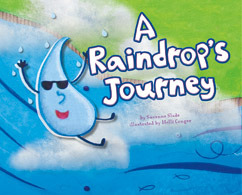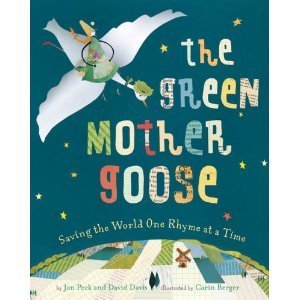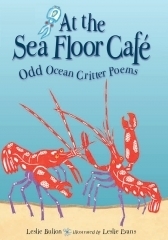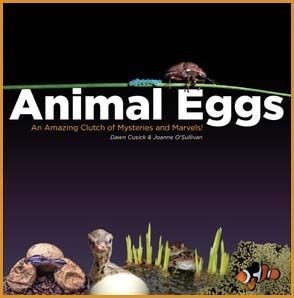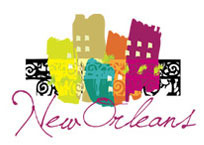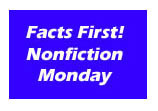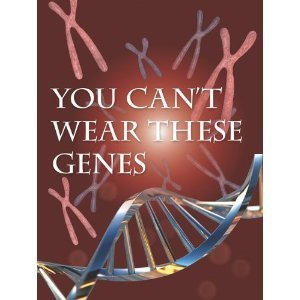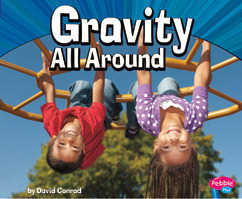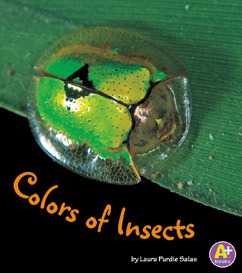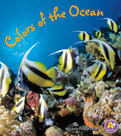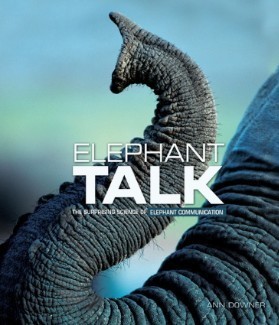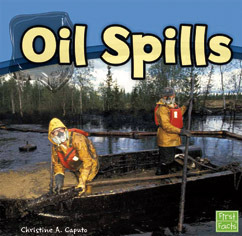Shirley Smith Duke's Blog, page 10
May 3, 2011
A Raindrop's Journey
A Raindrop's Journey
By Suzanne Slade
Illustrated by Holli Conger
Capstone's Follow it! Series
Picture Window Books, 2011
ISBN: 9781404862661
Nonfiction picture book
Grades 1-3
This fun picture book takes kids on an exhilarating ride through the eyes of a drop of rain. Tumbling from a cloud, the raindrop is part of a rainbow before it falls into a stream and later splashes into a lake, where it gets sucked up into a water treatment plant. From there it goes into a faucet, is drunk by a child, and sweated out. The sweat falls to the sidewalk and turns to water vapor, where it gathers with other droplets to finally create a cloud, freezes and becomes a snowflake.
The cartoon-like illustrations and pithy comments from the drops enliven the water cycle story and the book includes in depth parts of the cycle to explain how we get clean drinking water—but keeps it simple to understand. A straightforward narrative details specifics about each spread the kids should have a good time reading about the water cycle. The idea of all our water moving constantly and being recycled is a fascinating one to young learners and this book is a great way to introduce the water cycle.
Activity
Use the information from the book to create a diagram of the water cycle. Label the main steps and then write a paragraph about what the diagram shows.
Use this site for more information and coloring sheets at the bottom of the page.
This site has a large number of links about the water cycle.
National Science Standard: properties of earth materials; changes in earth and sky
Book from Capstone breakfast at TLA. Thank you, Capstone. It was great fun!








April 26, 2011
The Green Mother Goose
The Green Mother Goose
By Jan Peck and David Davis
Illustrated by Carin Berger
Sterling Publishing; Sterling Children's Books, 2011
ISBN #978-1-4027-6525-4
Picture book
Besides The Green Mother Goose, Jan Peck and David Davis are the authors of many other books for children. I've seen their terrific school visit program, too, and it's a fun one.
"Together we'll do it—
We'll help save the Earth,
Our emerald home,
The place of our birth.
Come now, rhyme with me,
Let's turn our hearts loose,
And fly 'round the world
With Green Mother Goose."
This clever, creative book takes a look at classic nursery rhymes and makes them "green." The suggestions in each rhyme explain or provide ways that everyone can help improve the Earth. Rather than preaching about saving the Earth, the information is available for the taking in a fun-filled, short rhyme that will stay with you. Authors Peck and Davis surely had great fun matching rhymes with green ideas.
The Green Mother Goose is a great book to open dialogue with kids about the Earth, recycling, and what they can do on their own. The rhymes cover the simplest steps, like recycling, to the more complex additions of windmills and solar panel additions. It also opens the discussion of new vocabulary, for the book is rich in terms related to helping the environment.
The whimsical appeal of the art serves to focus and expand on the ideas behind the writing and sets a perfect tone for the book. The cut paper collage comes from "found papers and ephemera." The book is produced with a "practice what you preach" style mentioned on the credits page.
The Green Mother Goose lends itself to a unit for Earth Day, reading, units on the environment, recycling, story time, and introducing the National Science Standards about organisms and their environments and changes in environments. It would make a fun poetry memorizing unit and a wonderful Reader's Theater production. I can also see it in a PTA program and school wide presentation produced by the students—especially for Earth Day activities.
It's delightful to pick up a book and really love it. This is one of those books. It would be an excellent lesson if paired with the original Mother Goose nursery rhymes. What a fun discussion!
Activity 1
Choose one of the rhymes from the book. Identify the environmental concept from the new rhyme and research it to find more information. Write a paragraph explaining the problem and suggest some ways to help.
Activity 2
Make a list of activities mentioned in the book to help save the Earth. Create a poster suggesting things kids can do to help the environment and Earth. Decorate the poster with cut paper collage similar to the art in the book.
Saving the Earth suggestions
Activities to help
National Geographic's green tips
National Science Standards: organisms and the environment; changes in environments
Book from my own autographed library collection. Jan and David signed it at TLA!








April 19, 2011
Planting the WILD Garden
Planting the Wild Garden
By Kathryn O. Galbraith
Illustrated by Wendy Anderson Halperin
Peachtree Publishers, 2011
ISBN #978-1-56145-563-8
Ages 4-8
Nonfiction picture book
Welcome to Week 2 of Peachtree's Blog Tour. This week I'm featuring a book I loved and hope you enjoy it, too. Check out all the other blogs on the tour this week here.
"The farmer and her boy plant their garden. They drop seeds—tiny, fat, round, and oval—into the earth. From these seeds, pumpkins and peas, carrots and cabbages will grow.
In the wild meadow garden, many sees are planted too, but not by farmers' hands."
From the seed-filled endpapers to the bibliography, this lovely book takes the reader outdoors to nature and all the fascinating ways seeds grow new plant life. Beginning in the garden, a woman and child place seeds in the earth. At the same time, seeds are being distributed in nature by animals, people, and even plants themselves, that will grow into new plants, providing food and distributing more seeds in the way only nature can do.
The text flows up and down, almost as if on the wind on one spread and popping from a seed pod on the next. The pencil and watercolor art spreads across the pages and the soft colors convey a peaceful sense of busy activity. Minnows, rabbits, raccoons, foxes, and people join the parade of seed distributors in a realistic, yet adorable, rendering.
This book would be a wonderful introduction to a nature unit, a seeds unit, life cycles, or spring book. It opens up the world of nature and the cycles that occur and the marvels of science unfold in its pages. Galbraith's text is equally matched by Halperin's art. Peachtree produces beautiful picture books and this is an outstanding one.
Activity 1
Look up the life cycle of a particular seed. This image shows an acorn in its life cycle. Use folded paper to illustrate four stages of the acorn as it grows.
Activity 2
Plant a bean seed in a paper cup and set up a germination of several seeds in a plastic bag with a wet paper towel so the children can see how the seed sprouts. Have them record the progress by keeping a written or drawing log and record the date.
Write about their activity or do one together.
Activity 3
Look up more information about how seeds are dispersed in nature. This site has animated examples.
Here is more about what seeds need to grow.
National science standard: organisms in the environment; life cycles of organisms
Book courtesy of Blue Slip Media








April 11, 2011
At the Sea Floor Cafe
Peachtree is having a two week blog tour. Be sure to check out their blog.
I'll be at TLA this year, too. I'm signing my picture book, No Bows! at 1:00 on Wednesday at Peachtree's booth. Drop by, look at their books, and say hello. Lesley, the author of At the Sea Floor Cafe, is presenting on Thursday from 8:30-9:30 and then signing, so be sure to stop by booth #1623 and get this book.
At the Sea Floor Café
Odd Ocean Critter Poems
By Leslie Bulion
Illustrated by Leslie Evans
Peachtree, 2011
ISBN #978-1-56145-565-2
Ages 8-12
Nonfiction; poems
"Let's visit a habitat shallow and deep,
And boiling hot, where acids seep,
And frigid and pressured and mountainy-steep,
Come explore the sea!"
So begins the poem invitation to Dive In! and explore the vast sea and the unusual creatures living there. Each poem provides facts about ocean animals in a variety of poetic styles and forms. A smaller inset section gives an explanation of the animal and its habits expressed in the poem. The extensive back matter explains the poem's form and specifics about that style of poem. It also includes a glossary of science terms, websites, and other books to enjoy. An acknowledgment page attests to the author's research.
The art is lovely and evokes the fun nature of the poems in the book without being intrusive. It's done in linoleum block print and perfectly suits the whimsy of the poetry it illustrates. This is a fun way to introduce science into literature and involve readers in the awe of science through the odd, interesting life forms in a time when science is more important than ever.
This book would make a wonderful reader's theater or group presentation. There's a poem for every child and the science details are a fun addition. It's a great choice for libraries, schools, or home. What a joyous combination: poetry and science.
Activity 1
Research one of the animals from the book. Write a report about that animal. Include the facts from the poem and add any new information you've learned from the research. Present the information in an interesting way.
Enchanted Learning has ocean animals here.
National Geographic Kids has some ocean animals.
Activity 2
Choose a favorite or well-known sea animal and write a poem about it in one of the poetry styles from the book. Illustrate your own poem.
I've also written a number of teacher guides for other Peachtree nonfiction. See those here.
National Science Standard: characteristics of organisms; organisms and their environment
Book provided by Peachtree Publishers for their Blog Tour








April 5, 2011
Animal Eggs
Animal Eggs
An Amazing Clutch of Mysteries and Marvels!
By Dawn Cusick and Joanne O'Sullivan
EarlyLight Books, 2011
ISBN # 978-0-9797455-3-9
Nonfiction
Grades PreK-3
"If someone offered you a great prize for every egg-laying animal you could name in five minutes, how many animals could you think of? In the pages that follow, you will meet more than a hundred animals that lay eggs. The animals growing inside these eggs are called embryos, and the yellow food source for the animal is called the yolk sac."
I knew there were more than chicken and frog eggs, but I didn't realize just how many there are until I read this delightful book. It's packed full of egg laying animals with fascinating facts and details about everything egg.
The book is divided into chapters relating specific information about anything related to eggs. Each chapter's information is sectioned off into text boxes and bright photographs to convey the information. The pages are stuffed with facts and animal examples and feature the wide array of colors, shapes, and sizes that eggs come in.
From octopus to platypus, Animal Eggs provides a fascinating look at egg-laying animals. This book is excellent for reluctant readers, with its divided information sections. It would be a wonderful way to introduce vertebrates and invertebrates, or to start a discussion of the vertebrate animal groups. It would be a fun way to introduce categories, too. It's a good book to have in a library!
Activity 1
Create a graphic organizer to group the vertebrate and invertebrate animals mentioned in the book. For older students, subdivide the vertebrate groups into the five main categories. Fill the organizer with egg-laying animals from the book. Add a fact or two, and illustrate the work.
Activity 2
Choose one animal from the book and look up its life cycle. Diagram the life cycle, label it, and add facts about the animal as shown in the cycle.
See examples of graphic organizers here.
This site has some easy examples of life cycles.
This page has life cycle lesson plans.
National Science Standard: characteristics of organisms; life cycles of organisms
Book provided by publisher.








April 3, 2011
Nonfiction Book Blast at ALA
I'm featuring my book, YOU CAN'T WEAR THESE GENES, at 2011 ALA in New Orleans this June 26 at 8:00 A.M. on a panel of terrific, prolific, nonfiction authors. Each author on the panel is introducing her 2011 book, along with an activity and handout. We invite everyone at ALA to attend our panel presentation–it's going to be a blast! Here's the information.
Welcome to our Nonfiction Book Blast blog right here! We'll be speaking at ALA 2011 this summer. We invite you to join us!

Nonfiction Book Blast: Booktalks and Activities for Your Library
Start school with new booktalks and activities from ten nonfiction authors: April Pulley Sayre (Rah, Rah, Radishes), Kelly Milner Halls (In Search of Sasquatch), Deborah Heiligman (Charles and Emma), Loree Griffin Burns (The Hive Detectives), Carla Killough McClafferty (The Many Faces of George Washington), Christine Taylor-Butler (Magnets), Shirley Duke (You Can't Wear These Genes), Darcy Pattison (Prairie Storms), Carla Mooney (Explorers of the New World) and Anastasia Suen (Read and Write Sports). (Handouts)
Visit Nonfiction Monday at L.L. Owens for a comprehensive list of good books.
You Can't Wear These Genes
You Can't Wear These Genes
by Shirley Duke
Rourke, 2011
Let's Explore Science Series
ISBN #978-1-61590-563-8
Grades 4-7
Nonfiction
"You have your mother's green eyes."
"Your chin comes from your father."
"You must get your musical ability from your parents."
People have always noticed traits, or characteristics, that are similar between parents and their kids. Some of these traits, such as eye color and a dimpled chin, can be easily seen. Other traits, like blood type and personality, cannot be seen.
Parents pass down traits to their offspring, or young. The offspring have these inherited traits for the rest of their lives. Genetics is the branch of science that studies how traits are passed along.
My first science book as the author! It's been a dream of mine to write a science book and now I have. This one, and the other one I wrote, are in the Let's Explore Science series by Rourke. This is the book I'm featuring on the Nonfiction Book Blast panel at 2011 ALA in New Orleans.
This introduction to genetics covers the basics of what it takes to pass along hereditary material and how it is manifested in offspring of humans, touching on animals and plants. Complicated terms and processes are explained on a reading level accessible by elementary readers. Labeled graphics and large photos help clarify the text and make the book appealing and bright.
Beginning with the basic building block, the cell, after defining genes and DNA, the chapters continue with boy or girl, combining traits, problems with genes, and the future of genetics. Short sidebars scattered throughout the text give additional information and break up the text into readable chunks. The book contains a strong glossary, index, and website information, plus a picture and bio of the author—that's me!
This complicated subject is made easier to understand in You Can't Wear These Genes and explores the very beginnings of genetics while making it accessible to young readers (something I had a great deal of experience doing as a teacher). The wealth of knowledge being discovered in this complex field is arriving weekly and this book is an excellent way for young scientists to begin to understand how the cycle of life and growth occur.
Activity
Create your own DNA sequence. Use this activity to put together base pairs. As each pair is joined, write down the sequence for 20 pairs and then read the information below the model. Then look up what components create the "rungs" of the DNA ladder. Draw a simple diagram and label the parts.
Here's a good place to start for more information.
Here's more excellent information about genetics.
National Science Standard: reproduction and heredity
Book is author's own copy








March 29, 2011
Gravity All Around
Gravity All Around
By David Conrad
Capstone Press (Pebble Plus), 2011
ISBN # 9781429666060
Nonfiction
Grades PreK-2
"It makes a dropped glass fall to the floor. It keeps bouncing balls from flying off into space. It's a force called gravity."
This book introduces early readers to a difficult concept–gravity. Short, snappy sentences explain, illustrate, and provide a brief history of gravity's discovery using a controlled vocabulary. Its deceptively simple words explain the concept well at this level and make an appealing book for boys and girls alike. Clever photos support the text and provide scaffolding for the reader.
Physical science isn't always a favorite topic, but this book makes it real and interesting. It would be an excellent way for the early grades to introduce physical science and the art and final activity will appeal to everyone.
Activity
Do one of the gravity experiments listed below. Write about the experiment using the scientific method. Explain the results and conclusion of your experiment.
Use this scientific method worksheet for your experiment.
Try these gravity experiments.
This site has lots of links about gravity.
Here's a fun site for older kids (8+).
Another book I just wrote will be out at the end of this year. It provides a good description of gravity. The title is Forces and Motion at Work and is being published by Rourke Publishers in the Let's Explore Science series.
National Science Standard: understanding about scientific inquiry; position and motion of objects
Book provided by publisher.








March 23, 2011
Colors of Insects
Colors of Insects
By Laura Purdie Salas
Capstone , A+ Books, 2011
ISBN #9781429652551
Nonfiction
Grades K-2
"More than half of all animal species on Earth are insects. Look at them closely. You'll see amazing things, like big, round eyes and glow-in-the-dark bellies! Sharp pincers, see-through wings, hairy legs, and glossy shells. And their colors are out of this world!"
What a fun way to present colors to young children. This book takes a typical early childhood concept and elevates it to the fascinating world of science. The theme of the different colors is conveyed with familiar and not so familiar insects in a brilliant, three-quarter page spread. These up-close photographs present the color and the inset text box adds a short, interesting fact about the insect depicted.
The vocabulary in the text is supported by context clues and the bright pictures. Back matter includes a glossary, more reading, Internet FactHound site, and an index. This would make a great read-aloud book for story time or one a budding scientist reader will love. I can picture a science loving child reciting some of the specific, fascinating facts. And it's a fun idea!
Activity 1
Create a color chart and list the colors used in the book. Under each color, write the insect from the book. Then look up more insects and add them to the color chart, or create your own category and add animals (or plants, flowers, etc.) that fit in that color's category. This would be a good way to introduce classification: use grouping by fish, amphibians, reptiles, birds, and mammals, or the invertebrate groups.
Here are some interesting facts about animal colors in detail.
National Geographic has excellent animal photos.
Activity 2
Look up animal camouflage and protective coloration to find out how animals use color to hide or stay safe.
Investigate animal camouflage here.
Capstone's Colors of the Ocean by Laura Purdie Salas is another book that can help introduce colors. It's in a series that is sure to hold the interest of any reader.
National Science Standard: organisms and their environment
Book provided by Capstone








March 15, 2011
ELEPHANT TALK
Elephant Talk
The Surprising Science of Elephant Communication
By Ann Downer
Twenty-First Century Books, Lerner, 2011
ISBN #978-0-7613-5766-7
Nonfiction
Ages 11-18
"It is early morning in Amboseli National Park in Kenya, Africa. A baby elephant hurries to keep up with his mother and sisters and aunts as the herd moves out, following the eldest female to a stand of acacia trees. They will spend the morning browsing o acacia bark and grass."
This fascinating insight into fellow mammals and the capabilities they display in communication and to their families delights and amazes. From the first page, author Ann Downer takes the reader on an exploration of the ins and outs of the latest research information about elephants to the final chapter, where she revisits a zoo.
From early studies to research pioneers to the current body of knowledge growing about the various kinds of elephants, a fantastic language comes to life. Elephants have a set of trumpets, chirps, rumbles, and other calls identified by elephant scientists and set down in a universal language of elephant talk. The bonds of the herd, babies and care, and maturing males, females, and grandmothers are explored in detail. The newest information concerning elephants' ability to sense rumbles and vibrations through their feet promises more knowledge. It abounds with science and details and is filled with vibrant, interesting photographs that add to the wonder of this mighty animal.
The author explores the changing human relationship between elephant and humans. She looks at changes in elephant training and how elephants bring out the "wow" factor. She discusses the problems of zoos versus loss of habitat and poaching as the possibly looms of the elephants' eventual extinction in our lifetime.
Full back matter includes a bibliography, further reading, glossary, index, source notes, timeline, TOC, and websites. This is a book sure to please budding scientists, reluctant readers, nonfiction lover, and anyone interested in animals–and it's a fun read. This book belongs in every nonfiction collection.
Now this is a fun one. Listen to elephants here. I had make myself stop listening. Keep clicking through and start the sound, too.
I loved this book and it fits right in with NOVA's "Secret Life of Scientists" web program and scientist Dave Sulzer. Take a look at what he'd done with elephants—and it involves music! I'll be guest blogging about his musical elephants soon.
Scan the scientists to find him if he's not right up front.
Another excellent elephant book for younger kids is Beco's Big Year by Linda Stanek and the Columbus Zoo. Stanek does a wonderful job in showing the baby elephant's development without being cute or anthropomorphic. See my review of Beco.
See a terrific Beco review and more at Growing with Science.
Activity 1
Compare the differences between Asian and African elephants and write about them to explain those differences in relation to their habitats and characteristics.
Activity 2
Choose one of the elephant researchers discussed in the book and research their studies. Write about what they've learned and what's yet to learn about elephants.
Activity 3
Give an example of how the scientific method was used by one or more of the researchers from the book and explain how it contributed to the body of knowledge.
See more about elephants at the American Zoological Association site.
How you can help.
National Science Standard: biological evolution and behavior of organisms
Book provided by publisher.








March 8, 2011
OIL SPILLS
Oil Spills
By Christine A Caputo
Capstone Press, 2011
First Facts
ISBN #9781429666589
Grades 1-3
Nonfiction
"Where does gasoline come from? What is used to make both electricity and plastics? The answer is oil."
This book introduces early readers to what oil is and its uses, how spills happen and their effects on life and the environment, and how they are cleaned up. Definitions are included on the page where they are used in small inset sections and clear pictures, many of them labeled, and interesting graphics support the text.
In light of the recent Deepwater Horizon spill in the Gulf of Mexico, this book is timely and is a good way to introduce the subject to young readers in a way they can understand. It has a table of contents, glossary, more reading, Capstone's fact hound website, and an index. This book would be a good way to start off an environment study or energy study as well as a history topic for young learners.
Activity 1
Do the experiment at the NOAA site. Write up the results and explain how this relates to cleaning the animals covered with oil in an oil spill.
Activity 2
Review how electricity and motor vehicles require using oil. Look up ways to cut down on how much electricity you use. List all the ways you can find. Make posters to remind people about the ways that taking even small steps can help reduce our oil dependence.
Here's a good source of information about oil spills from the National Wildlife Foundation.
National Science Standard: changes in environments
Book provided by publisher.








Shirley Smith Duke's Blog


